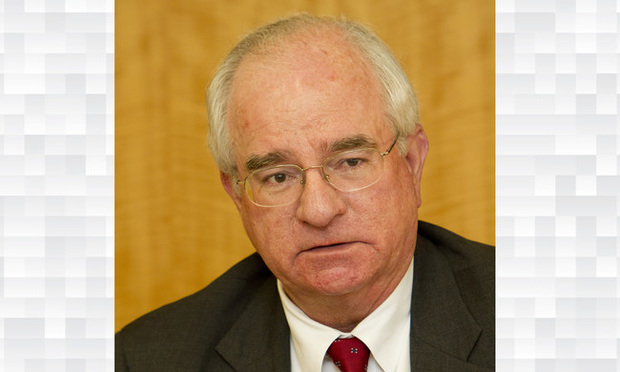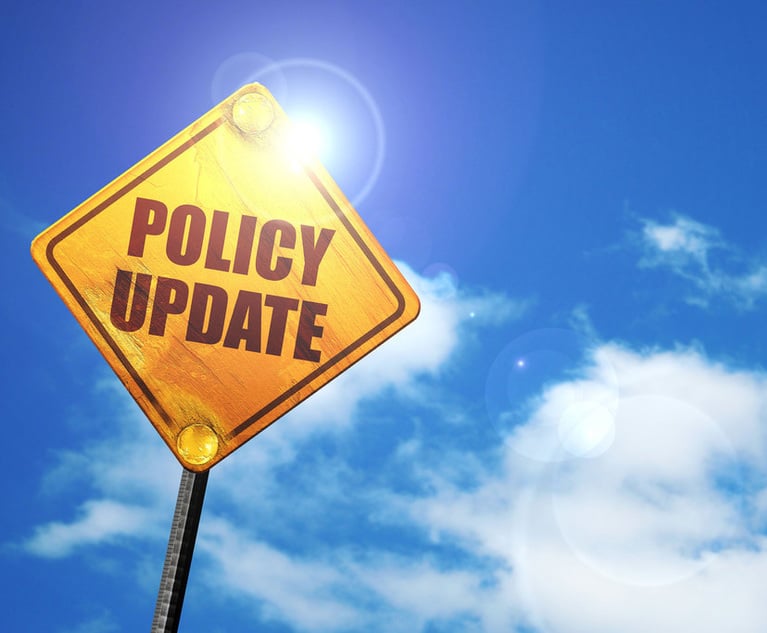Equifax Judge Warns Lawyers to Limit Record-Sealing Requests
U.S. District Chief Judge Thomas Thrash issued a 34-page protective order in the Equifax data breach multidistrict litigation but warned lawyers and their clients that they should treat documents filed in the case as "presumptively public" and use their "best efforts" to limit confidential filings.
May 03, 2018 at 03:37 PM
4 minute read

The federal judge presiding over massive multidistrict litigation stemming from last year's data breach at Atlanta-based Equifax Inc. has signed a protective order warning lawyers that, while some highly sensitive materials may be sealed during the litigation, they should treat documents filed in the case as “presumptively public.”
U.S. District Chief Judge Thomas Thrash also said he would require “an appropriate showing” to justify any confidentiality claims.
Thrash acknowledged in the 34-page order April 18 that the nature of the litigation—concerning the exposure to hackers of the financial and personal data of more than 145 million people—would necessarily involve “unique risks” related to privacy, data security and data management “that will be greater than in most cases.”
Nevertheless, the judge ordered the parties “to use their best efforts to limit the filing of confidential or highly confidential material under seal.”
“This order,” he warned, “does not confer blanket protections on all disclosures or responses to discovery. … The protection it affords from public disclosure and use extends only to the limited information or items that are entitled to confidential treatment.”
It is not the first time Thrash has put attorneys on notice that he does not intend to allow them to use protective orders to unilaterally seal large swaths of the public record.
In 2015, while presiding over multidistrict litigation stemming from a data breach at Atlanta-based Home Depot, Thrash warned lawyers he would reject attempts to seal large portions of the court record.
“The first 10 years I was on the bench, pretty much we just went along with whatever y'all wanted to do about sealing documents. At least I did,” he said then. “And then in these big commercial cases it became clear that things were just getting out of hand, and the lawyers were wanting to seal virtually everything.”
“This wholesale practice of designating everything and every page of deposition testimony as confidential or super-confidential or attorneys' eyes only I'm not going to accept,” he said.
In the Equifax case, Thrash said that sealing would be limited to documents that could reveal a trade secret or other confidential research, development, financial or data security information. The protective order also extends to information revealing personally identifiable information, corporate security information and other information that “would create a substantial risk of serious harm.”
Thrash directed that anyone producing materials under seal would be limited to designating as protected “only those parts of material, documents, items, or oral or written communications that qualify—so that other portions of the material, documents, items or communications for which protection is not warranted are not swept unjustifiably within the ambit of this order.”
“Mass, indiscriminate, or routinized designations are prohibited,” Thrash's order said. Moreover, if data or other information is filed under seal but does not qualify, “That producing party must promptly notify all other parties that it is withdrawing the mistaken designation.”
Thrash also made clear what he would not allow to be filed under seal:
- Any information in the public domain either at the time it is filed or that becomes part of the public domain at a later, including information that becomes part of the public record through trial or other court proceedings;
- Any information known or obtained by the recipient of the information, as long as it was obtained legally.”
Thrash instructed the leadership committees of lawyers steering the litigation and hundreds of clients they represent “to use their best efforts to limit the filing of confidential or highly confidential material under seal to those situations where such filing is necessary to the resolution of a motion or other matter before the court.”
Any party or nonparty, Thrash said, may challenge a designation of confidentiality at any time.
This content has been archived. It is available through our partners, LexisNexis® and Bloomberg Law.
To view this content, please continue to their sites.
Not a Lexis Subscriber?
Subscribe Now
Not a Bloomberg Law Subscriber?
Subscribe Now
NOT FOR REPRINT
© 2025 ALM Global, LLC, All Rights Reserved. Request academic re-use from www.copyright.com. All other uses, submit a request to [email protected]. For more information visit Asset & Logo Licensing.
You Might Like
View All


Plaintiffs Attorneys Awarded $113K on $1 Judgment in Noise Ordinance Dispute
4 minute read
'Didn't Notice Patient Wasn't Breathing': $13.7M Verdict Against Anesthesiologists
12 minute readTrending Stories
- 1Data Disposition—Conquering the Seemingly Unscalable Mountain
- 2Who Are the Judges Assigned to Challenges to Trump’s Birthright Citizenship Order?
- 3Litigators of the Week: A Directed Verdict Win for Cisco in a West Texas Patent Case
- 4Litigator of the Week Runners-Up and Shout-Outs
- 5Womble Bond Becomes First Firm in UK to Roll Out AI Tool Firmwide
Who Got The Work
J. Brugh Lower of Gibbons has entered an appearance for industrial equipment supplier Devco Corporation in a pending trademark infringement lawsuit. The suit, accusing the defendant of selling knock-off Graco products, was filed Dec. 18 in New Jersey District Court by Rivkin Radler on behalf of Graco Inc. and Graco Minnesota. The case, assigned to U.S. District Judge Zahid N. Quraishi, is 3:24-cv-11294, Graco Inc. et al v. Devco Corporation.
Who Got The Work
Rebecca Maller-Stein and Kent A. Yalowitz of Arnold & Porter Kaye Scholer have entered their appearances for Hanaco Venture Capital and its executives, Lior Prosor and David Frankel, in a pending securities lawsuit. The action, filed on Dec. 24 in New York Southern District Court by Zell, Aron & Co. on behalf of Goldeneye Advisors, accuses the defendants of negligently and fraudulently managing the plaintiff's $1 million investment. The case, assigned to U.S. District Judge Vernon S. Broderick, is 1:24-cv-09918, Goldeneye Advisors, LLC v. Hanaco Venture Capital, Ltd. et al.
Who Got The Work
Attorneys from A&O Shearman has stepped in as defense counsel for Toronto-Dominion Bank and other defendants in a pending securities class action. The suit, filed Dec. 11 in New York Southern District Court by Bleichmar Fonti & Auld, accuses the defendants of concealing the bank's 'pervasive' deficiencies in regards to its compliance with the Bank Secrecy Act and the quality of its anti-money laundering controls. The case, assigned to U.S. District Judge Arun Subramanian, is 1:24-cv-09445, Gonzalez v. The Toronto-Dominion Bank et al.
Who Got The Work
Crown Castle International, a Pennsylvania company providing shared communications infrastructure, has turned to Luke D. Wolf of Gordon Rees Scully Mansukhani to fend off a pending breach-of-contract lawsuit. The court action, filed Nov. 25 in Michigan Eastern District Court by Hooper Hathaway PC on behalf of The Town Residences LLC, accuses Crown Castle of failing to transfer approximately $30,000 in utility payments from T-Mobile in breach of a roof-top lease and assignment agreement. The case, assigned to U.S. District Judge Susan K. Declercq, is 2:24-cv-13131, The Town Residences LLC v. T-Mobile US, Inc. et al.
Who Got The Work
Wilfred P. Coronato and Daniel M. Schwartz of McCarter & English have stepped in as defense counsel to Electrolux Home Products Inc. in a pending product liability lawsuit. The court action, filed Nov. 26 in New York Eastern District Court by Poulos Lopiccolo PC and Nagel Rice LLP on behalf of David Stern, alleges that the defendant's refrigerators’ drawers and shelving repeatedly break and fall apart within months after purchase. The case, assigned to U.S. District Judge Joan M. Azrack, is 2:24-cv-08204, Stern v. Electrolux Home Products, Inc.
Featured Firms
Law Offices of Gary Martin Hays & Associates, P.C.
(470) 294-1674
Law Offices of Mark E. Salomone
(857) 444-6468
Smith & Hassler
(713) 739-1250






